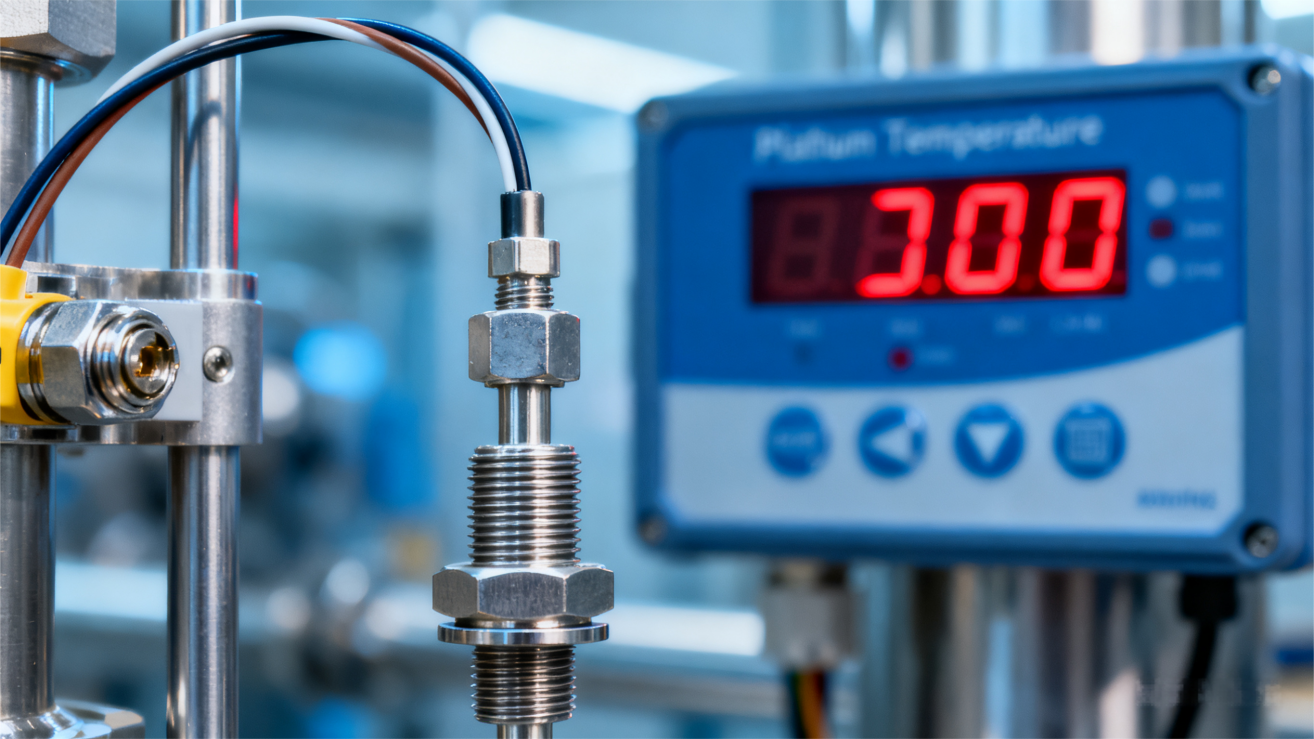In recent years, the global heat meter market has experienced significant growth driven by rising demand for energy efficiency, expanding district heating systems, and increasingly stringent government regulations aimed at reducing carbon emissions. Heat meters, used to measure thermal energy consumption in residential, commercial, and industrial settings, are critical for optimizing energy use and ensuring accurate billing. As of May 19, 2025, Europe—particularly Nordic countries and Germany—leads in heat meter production, followed by China, with the U.S. also playing a notable role. This article explores the current state of heat meter production, highlights key regions, forecasts future trends, and introduces Starlight Thermocouples, a reliable supplier of thermocouples for heat meters—a vital component in their manufacturing.
Europe: The Hub of Heat Meter Production
Europe dominates global heat meter production, thanks to its widespread adoption of district heating systems and well-established regulatory frameworks for energy efficiency. Nordic countries (Denmark, Finland, Sweden, Norway, and Iceland) lead the charge, with cities like Copenhagen achieving 98% district heating coverage and Iceland reaching 95%, largely due to geothermal energy utilization. These regions rely heavily on heat meters to ensure precise thermal energy metering in multi-family residences, commercial complexes, and industrial facilities.
Germany is another major contributor to heat meter output. In 2023, Germany’s energy-efficient technology market reached $7.42 billion USD, with a significant portion dedicated to heating solutions. Leading companies like Kamstrup (Denmark), Danfoss (Denmark), Siemens (Germany), and Landis+Gyr (Switzerland) dominate the European market, producing thousands of heat meters monthly. For example, one prominent German manufacturer consistently produces 4,600 advanced ultrasonic heat meters per month to meet demand across Europe’s district heating networks. With 6,000 district heating networks serving millions of households, the region’s demand for high-quality heat meters remains robust.
European heat meters often incorporate compact thermocouples for district heating to accurately measure temperature differentials. These thermocouples for heat meters are critical for ensuring reliable performance in high-temperature environments, supporting Europe’s commitment to sustainable, efficient energy systems.
China: An Emerging Powerhouse in Heat Meter Manufacturing
Driven by massive thermal energy consumption and industrial growth, China is rapidly emerging as a key player in heat meter production. As the world’s largest consumer of thermal energy—accounting for 26% of global heat consumption in 2015—China’s urbanization and industrial sector expansion are fueling demand for heat meters. The Chinese government’s prioritization of energy efficiency has led to increased production to support district heating systems and industrial applications.
Companies like Wasion Group, a leading Chinese manufacturer, produce a range of mechanical and static heat meters, often integrated with thermocouples for enhanced energy efficiency, to meet domestic and international standards. As China’s largest thermal instrument supplier, Wasion plans to operate 1,910 assembly lines by the end of 2024, targeting markets across Asia-Pacific and beyond. The Asia-Pacific region, spearheaded by China, is projected to see significant growth in heat meter production due to rapid urbanization and government energy-saving initiatives. This trend positions China as a formidable competitor to Europe in the coming years.
Chinese heat meters utilize advanced heat meter thermocouples to ensure accurate temperature monitoring, making them suitable for applications ranging from urban heating networks to industrial plants. As China scales production, demand for high-temperature thermocouples for industrial applications will continue to rise.
United States: A Growth Market with Potential
In North America, the U.S. is a notable heat meter producer, though its output remains smaller compared to Europe and China. The U.S. market is growing due to increasing adoption of district energy services. The International District Energy Association reported that buildings using district energy surged from 158 in 2015 to 350 in 2016, driving demand for heat meters—particularly in residential and commercial heating systems, where thermocouples for residential heating play a vital role.
U.S. firms like Itron contribute to domestic production, focusing on advanced metering technologies that use thermocouples to enhance energy efficiency. However, district heating accounts for only 4% of U.S. heating demand, indicating substantial growth potential. In 2022, U.S. electricity consumption grew by 2.6%, with a slight 0.6% drop expected in 2023 and an average 1.2% increase forecast for 2024–2025. This fluctuating demand suggests steady but slower growth in U.S. heat meter production, unlikely to rival European or Chinese scales in the near term.
Forecast: The Future of Heat Meter Production (2025–2033)
The global heat meter market is poised for robust growth over the next decade. Industry reports project the market to reach 3.29439 billion USD by 2033, up from3.29439billionUSDby2033,upfrom1.92455 billion USD in 2024, at a compound annual growth rate (CAGR) of 6.95%. Europe is expected to maintain dominance due to ongoing investments in district heating infrastructure and smart metering adoption. Nordic countries and Germany will remain key production hubs, with output rising as utilities in Sweden and Finland placed 847 large-scale procurement orders in Q1 2024 alone.
China is forecast to expand significantly, potentially overtaking Europe by the late 2020s. Its focus on industrialization, urbanization, and energy efficiency—coupled with rising demand for thermocouples for smart heat meters—will drive this growth. By 2033, China could command a substantial global market share, especially as its assembly lines scale to meet domestic and international demand.
The U.S. will see moderate growth, with production aligning with district energy adoption. However, lower district heating penetration may limit its ability to match European or Chinese output. Emerging markets in Asia-Pacific, such as India and Japan, are also expected to contribute as they invest in energy-efficient technologies, further boosting demand for thermocouples for residential heating and industrial applications.
Future production will increasingly focus on smart technologies. Smart heat meters integrated with thermocouples will enable real-time monitoring, data analytics, and remote access, enhancing energy efficiency and user experience. As heat meters evolve, demand for advanced heat meter thermocouples capable of operating in high-temperature environments with precision will grow.
Starlight Thermocouples: A Trusted Supplier for Heat Meter Manufacturers
As global heat meter production expands, so does the need for high-quality components like thermocouples for heat meters. Starlight Thermocouples, a leading temperature measurement solutions provider, is committed to being a trusted partner for heat meter manufacturers. Specializing in thermocouples, Starlight delivers components essential for accurate thermal energy measurement in heat meters.
Their compact thermocouples for district heating are designed for precise temperature monitoring and overheating protection, ideal for heat meters in district heating systems, residential buildings, and industrial applications. Starlight’s thermocouples undergo rigorous testing to ensure reliability, as demonstrated by their production testing setup:
“Our thermocouples are tested under extreme conditions to guarantee performance in the harshest environments.”
Collaborating with leading manufacturers in Europe, China, and the U.S., Starlight supplies high-temperature thermocouples for industrial applications to enhance heat meter efficiency and durability. As the market grows, Starlight is poised to meet rising demand for thermocouples that align with global energy efficiency goals.
The Critical Role of Thermocouples in Heat Meter Innovation
Thermocouples are foundational to heat meter functionality, enabling precise thermal energy measurement by detecting temperature differentials in heating systems. In district heating, where water temperatures can exceed 130°C, high-temperature thermocouples for industrial applications are vital for accurate readings and system reliability. In residential settings, thermocouples for residential heating optimize energy use, lowering costs and environmental impact.
The rise of smart heat meters underscores the importance of thermocouples in smart heat meters. These components support real-time monitoring, data logging, and remote access, empowering utilities and consumers to track energy consumption more effectively. Starlight Thermocouples’ advanced solutions are designed to support these innovations, offering high accuracy, durability, and compatibility with smart metering technologies.
Conclusion
The heat meter market is on an upward trajectory, with Europe, China, and the U.S. leading production as of May 19, 2025. Europe, driven by Nordic nations and Germany, maintains dominance through extensive district heating networks and energy efficiency regulations. China is rapidly closing the gap, leveraging industrial growth and massive thermal energy consumption to scale production. The U.S., while growing, remains smaller but holds potential for future expansion.
Looking ahead to 2033, the global heat meter market is projected to reach $3.29439 billion USD, with China poised to surpass Europe as the largest producer. Suppliers like Starlight Thermocouples will play a pivotal role in this growth, providing thermocouples that ensure accuracy and reliability. As the world prioritizes energy efficiency and sustainability, the heat meter industry—and its reliance on advanced compact thermocouples for district heating—will continue to drive innovation.





